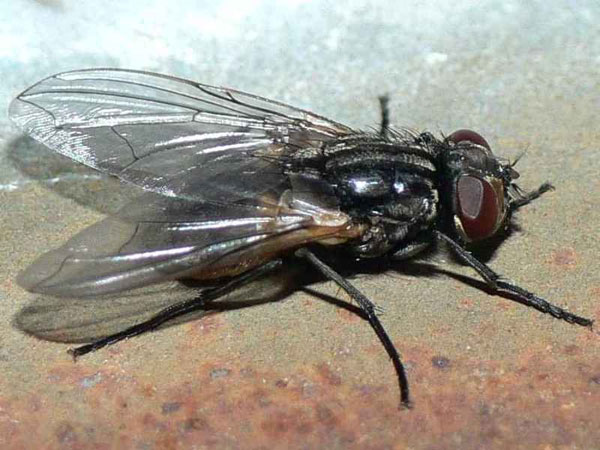Raising flies for animal feed
House flies (Musca domestica) can be a cheap and sustainable food source for farm-size livestock.
This is the prediction of some scientists and businesses, when the fly larvae are bred, raised at the ground, can provide a quantity of food protein for fish and other animals. Even businessman Jason Drew at Agriprotein suggested that fly larvae should be commercially fed to provide protein for fish and animal farming, which in turn will provide food for the growing population. gender.
Commercial feed flies can live in slaughterhouses, waste areas of plants, they will eat waste, improve the environment. These flies will then be processed into animal feed.

Flies provide a source of larvae for animal feed
This method has been applied by Agriprotein Company. In the past 5 years, the company has raised about 1 million flies locked in a 100-meter-wide cage, which produces about 1,000 eggs. After 17 days the larvae begin to harvest, before they turn into flies. Then dry, crush and sell as animal feed. In September 2012, the company produced 100 tons of wet larvae and 24.5 tons of feed.
According to Paul Vantomme, a United Nations official, the investment in raising flies for animal feed has great benefits for developing countries. Because it gives high productivity without big investment. However, keeping flies also poses many major challenges such as maintaining hygienic conditions, monitoring the quality and production of larvae.
Research on larvae for animal feed has also been conducted by Thailand. But in fact, not all countries can use this way to make animal feed. In Thailand there are reared insects that are parasites on many other commercially valuable animals, such as silkworms. Without good control of the reproduction of insects may destroy this silk industry.
The same point of view, Associate Professor Monica Ayieko of College Bondo, in Kenya, also said that even knowing the development of direct alternative protein sources would benefit the poor, but the biggest challenge is still questionable. When insects are popularly cultured.
- Take advantage of ... flies, mosquitoes in scientific research
- Flies bite off fire ant heads
- Video: The underwater copy of the tree catches flies
- Use flies to turn waste into food for pets
- 'Department of marketing' 'technology for animal feed production and crops from straw and sugarcane leaves
- The inventor of pigs by herbal bio-food
- What happens when flies land on your food?
- Should the food be thrown away as soon as the fly flies?
- Flies sit on us just to ... vomit and poop?
- Apart from cockroaches, which creatures can lose their heads and still survive?
- Reveal a sperm that is as long as 20 times the size of the body
- Close up of the largest flies on the planet
 Why do potatoes have eyes?
Why do potatoes have eyes? 'Tragedy' the world's largest carnivorous life: Death becomes ... public toilet
'Tragedy' the world's largest carnivorous life: Death becomes ... public toilet Tomatoes were once considered 'poisonous' for 200 years
Tomatoes were once considered 'poisonous' for 200 years Detecting microscopic parasites on human face
Detecting microscopic parasites on human face